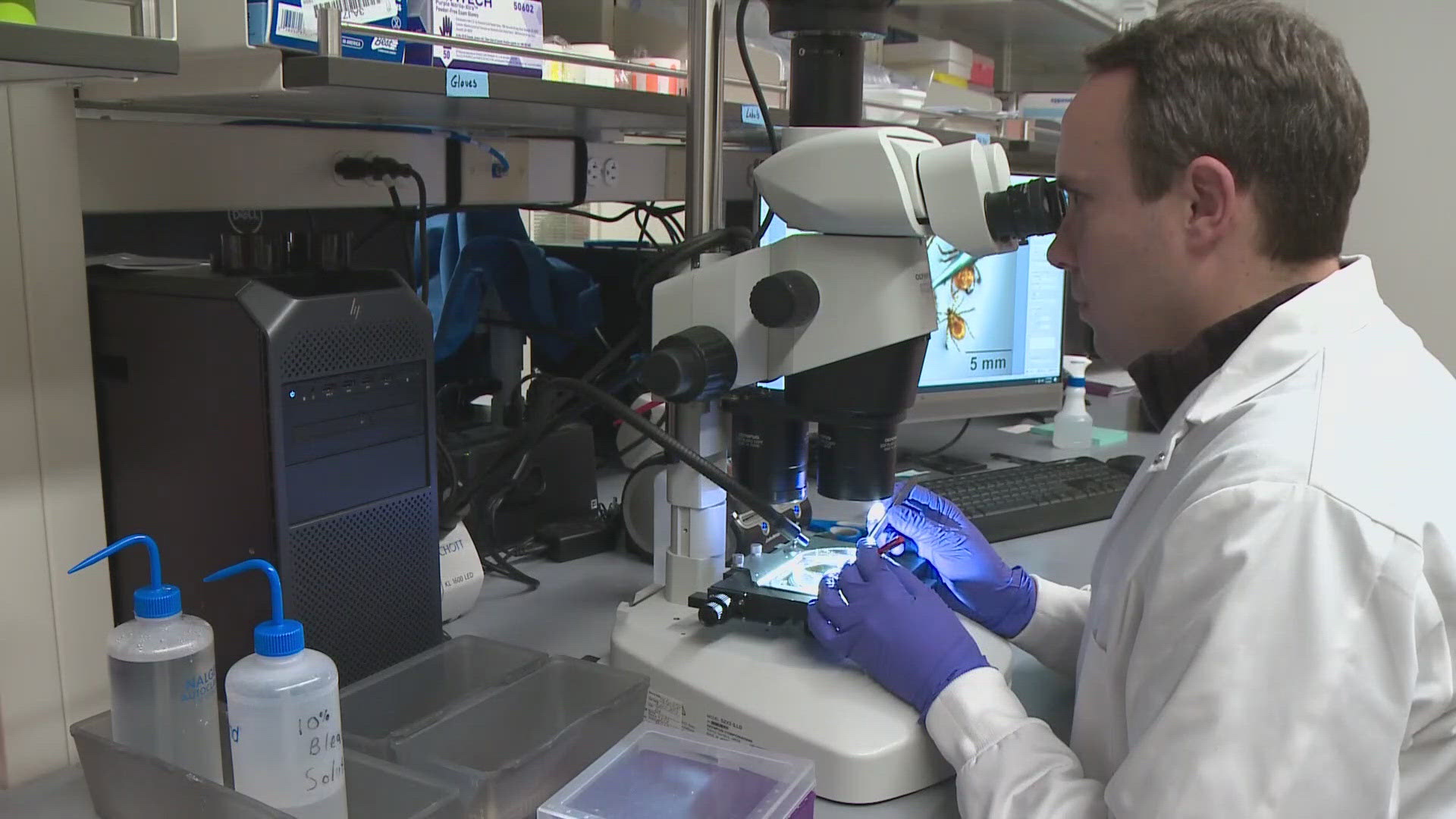SWANS ISLAND, Maine — A free science program teaching kids to protect themselves against ticks carrying diseases is underway in a Maine island community where residents live surrounded by tick habitat.
Over 1,500 students participate in the University of Maine 4-H Tick Project statewide.
Swans Island, located off the coast of Mt. Desert Island, has seen an increase in tick-borne illness, and students are now learning where disease-carrying ticks are and how to stay safe.
Carla Scocchi crisscrosses Maine, guiding the next generation against ticks. She's the University of Maine Cooperative Extension 4-H youth development professional and runs the university's 4-H Tick Project.
The free community science program involves students from Aroostook County to southern Maine. The newest school to sign on is a 30-minute ferry ride from Mt. Desert Island.
Scocchi went to Swans Island School, located on the heavily wooded four-mile island with about 350 year-round residents. Students in grades 6-8 will learn about ticks' lifecycle, their habitats, the diseases they transmit, and how tick migration is linked to climate change.
"You guys will become the experts on what species are here," Scocchi explained to the class.
What she didn't expect was how many of the students were touched by Lyme disease.
"Almost everybody in my family has had Lyme disease," eighth-grade student Asa Joyce told Scocchi in a somber tone.
"Six out of nine of my students have had Lyme or have Lyme right now. So, it's part of their lives," admitted the school's grades 6-8 teacher, Michelle Whitman.
That includes sixth-grader Boston Lemoine. His mother found a bull's eye rash on his back following a tick bite last year.
"I had aches and pains in my body, and I got really tired pretty easily," Boston explained.
Eighth-grade student Peyton Sawyer found an embedded tick after playing soccer. Like Boston, he was treated with antibiotics but still has lingering symptoms like brain fog and fatigue.
"I used to have a good memory, and there are multiple things now, but I can't remember stuff," Peyton added.
Next, the students headed outdoors to get some last-minute instructions before they spread out from the school's playground to hunt for ticks.
Students recorded the time of day and the current temperature while measuring the distance needed to drag for ticks using large cloths. Ticks attached to the fabric were collected, identified, and preserved in small vials. This group found eight deer ticks in less than 20 minutes among ground cover and trees. Then, students identified the ticks by species.
The school's playground and fields cover about three acres; the data gives educators a better sense of where deer ticks are questing, including in this wooded area where kids build forts.
"We know now where to steer the kids away from playing," Michelle said.
This data will empower students to be more confident in identifying ticks and performing frequent tick checks. It is critical information that Peyton plans to pass on to a younger sibling.
"Learning all this, I can help him prevent getting Lyme himself, so he doesn't have to go through all that," Peyton said earnestly.
Utilizing the supplies provided by the 4-H Tick project, the class plans to drag for ticks every month near their school and near popular hiking spots like the Burnt Coat Harbor Light Station, which draws hundreds of tourists every summer.
Researchers at the UMaine tick lab will identify the ticks and the pathogens. Data collected by the students is expected to show island residents, especially the elderly and children, are at high risk for tick-borne illness.
"We don't want them to be afraid, so we want them to have the information to be safe outside," Michelle added.

